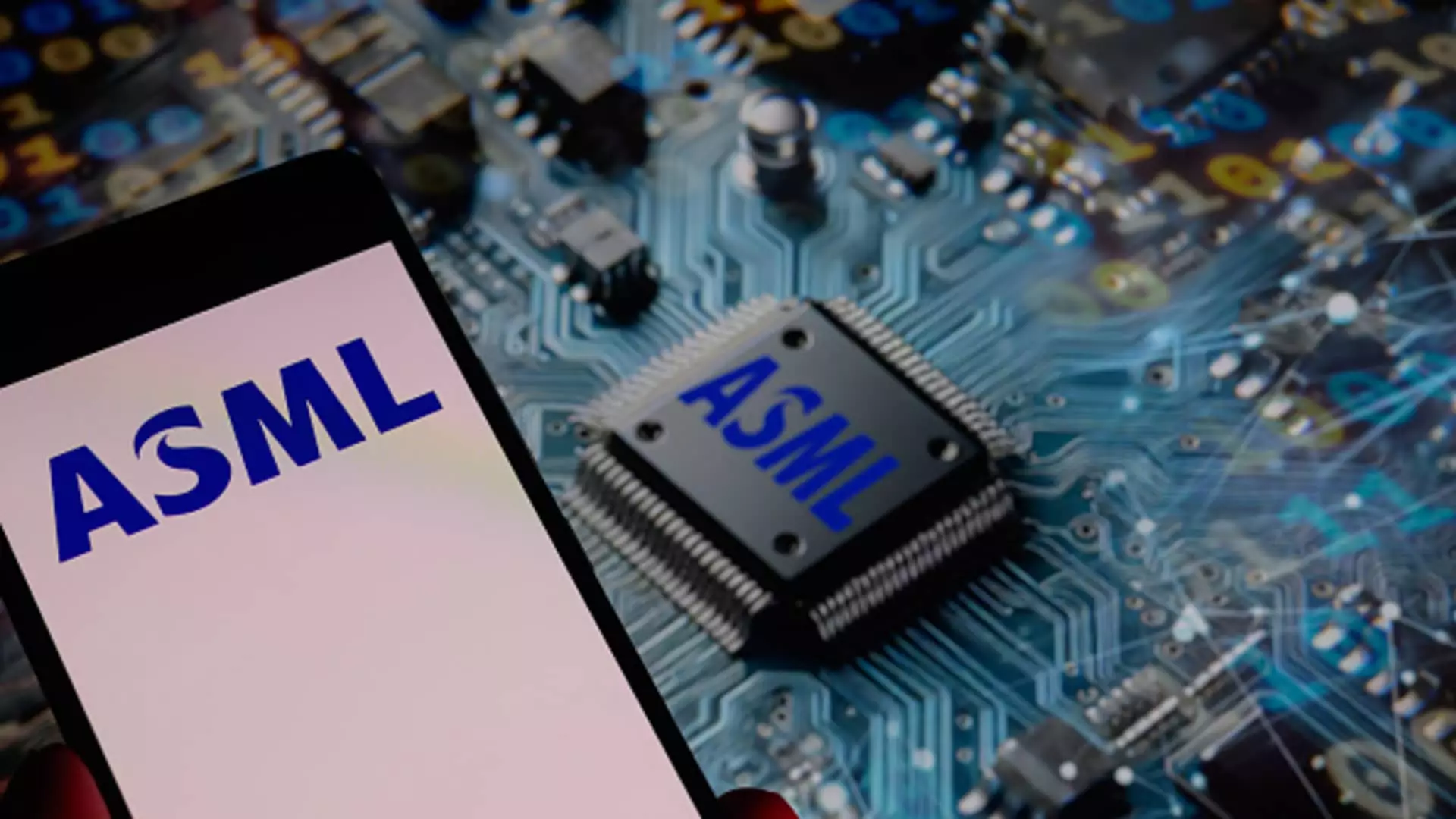ASML’s recent financial reports paint a picture of a company that’s managing to beat expectations on paper, yet behind the scenes, a more troubling narrative emerges. While quarterly revenues and profits exceeded market predictions, the company’s cautious outlook for 2026 signals a deeper crisis that warrants skepticism. The narrative of continuous growth in the tech sector is often accepted at face value, but ASML’s warnings about stagnation and uncertainty suggest that the industry is more fragile than it appears. For a company that supplies the critical machinery behind the world’s most advanced chips, its inability to confidently affirm its future growth highlights fundamental vulnerabilities in the current economic and geopolitical landscape.
False Confidence in a Frightening Context
The company’s second quarter figures, which defied expectations, might seem like a sign of strength. Net sales of 7.7 billion euros and a net profit of 2.29 billion euros overshadowed analyst estimates. However, these numbers are increasingly misleading in an environment riddled with risks. The uplift largely came from revenue from upgrades and less negative tariffs—factors that are inherently temporary and uncertain. It’s naïve to interpret these gains as sustainable when macroeconomic headwinds, supply chain disruptions, and U.S.-China geopolitical tensions continue to cast long shadows over the semiconductor industry. The statement from CEO Christophe Fouquet underscores this point: while AI demand remains strong, macroeconomic and geopolitical uncertainty are circumscribing the company’s ability to plan confidently for 2026.
The Illusion of Unstoppable Innovation
ASML’s technological advancements, particularly in EUV lithography, solidify its strategic importance. The company’s development of High NA machines, capable of shaping the next generation of chips, indicates a commitment to innovation. But innovation alone cannot shield ASML from the mounting risks it faces. The world’s growing geopolitical divide, especially between the U.S. and China, places crucial supply chains in jeopardy. The looming threat of export restrictions and tariffs threatens to hobble a company that has been riding the wave of technological dominance. The illusion that continued investment in cutting-edge machines guarantees growth neglects how political decisions can rapidly dismantle these market advantages, revealing a fragile dependency on geopolitics rather than pure technological progress.
Market Optimism vs. Reality
Investors seem captivated by ASML’s current prowess, betting on continued demand for high-tech chips driven by AI and other emerging fields. Yet, this optimism is a dangerous oversimplification. The fact that ASML’s guidance for 2025 expects growth to slow significantly—from an earlier forecast of 30-35 billion euros to a more modest 32.5 billion—suggests that even in the near term, the industry’s future is less certain than market narratives portray. To believe that AI-driven demand will sustain perpetual expansion ignores the realities of market saturation, technological cycles, and potential political sabotage. The company’s cautious stance on 2026 should serve as a wake-up call: the perceived robustness of the tech industry might be more fragile than it appears.
The Underlying Fragility of the Semiconductor Sector
The broader semiconductor sector faces systemic vulnerabilities. Heavy reliance on advanced EUV technology as a growth engine makes ASML particularly exposed. While the company touts its high-value machines and strategic R&D efforts, these innovations are expensive, complex, and politically sensitive. The shipment of a single High NA machine in the recent quarter underscores how limited and risky future growth is. These tools, while game-changing, are also enormous and costly, making their deployment vulnerable to geopolitical interference. The sector’s future depends not just on technological innovation but also on geopolitical stability—a condition that seems increasingly tenuous.
In an industry driven by rapid innovation and fierce geopolitical competition, overconfidence can be a perilous flaw. ASML’s recent disclosures should prompt investors and industry watchers to reassess assumptions about perpetual progress in the semiconductor realm. The company’s optimism for 2025 and cautious approach for 2026 highlight a broader truth: the future of tech growth is fundamentally uncertain. As global tensions escalate and economic pressures mount, the seemingly unstoppable rise of companies like ASML should be viewed with a healthy dose of skepticism. Technology alone cannot shield firms from the realities of a fragile geopolitical and economic environment—an inconvenient truth that the industry too often prefers to ignore.

